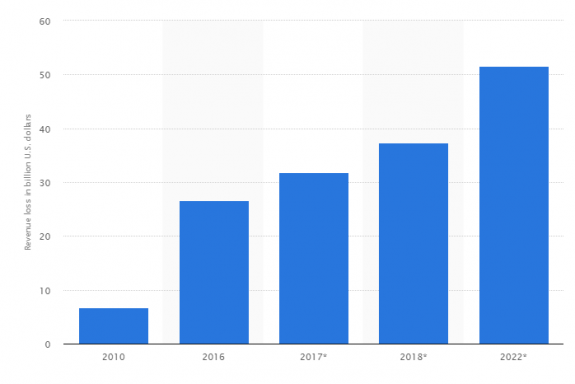By: Marjorie Loiseau, digital marketing manager for broadcast solutions
The FIFA World Cup 2018™, aka the most-streamed sporting event ever on Akamai’s platform, is one recent example of very valuable content driving huge audience figures and therefore was a primary target for piracy attacks.
According to Akamai, 2.7 times as much data was streamed for the last World Cup than for the 2014 event. Putting it another way, after only four days of competition, more data was delivered than for the whole Sochi 2014 Winter Olympics.
We know that live sports are a highly effective way to achieve massive audiences, especially when the event happens every four years. This year’s World cup final between France and Croatia recorded 7.9 million concurrent streams, which is less than the traffic spike registered during Mexico vs. Sweden while South Korea vs. Germany registered 9.7 million viewers.
Unfortunately, excitement around live sports is also shared by pirates and there’s a growing trend of sharing pirated live streams via social media. This was the case for this year’s Champions League knockout stages which saw over 5,000 illegal streams, 41% of which were redistributed on social media.
The result is that globally, piracy means billions of US dollars in lost revenues, revenue that that could have gone to content owners and rights holders.
Global online TV and movie revenue lost through piracy from 2010 to 2022 (in billion U.S. dollars) by Statista
The consequence is that, more than ever, it is absolutely essential to secure your content during its lifespan and across the entire delivery chain, especially now that our industry has become more connected than ever with the move to IP.
So would you trust the public internet to distribute your content to your audiences? This is where Globecast Exchange Network (GCXN) comes in. GCXN, our distribution solution that uses the public internet, allows you to distribute your content quickly and securely to audiences everywhere in the world. All you need is dedicated internet access and 1U rack space available, for limitless video internet delivery. Very flexible and cost-effective, there are plenty of reasons to distribute your broadcast feed over the internet, but you can read more about it here.
For more information about our newly enhanced GCXN, book a meeting at IBC 2018.
Meanwhile, with the rise of OTT and social broadcasting, tracking your content is no easy task. Now, it’s common for a single live feed to be used to create content suitable for multiple platforms. Indeed, single live sports feed can be used for linear playout, streamed to the live platforms of your different rights holders, including social media, or clipped and packaged for later use. Hence a key requirement is to have access to the tools to monitor your content while it moves throughout the entire process and to be immediately alerted once an issue occurs.
Discover more about our Digital Media Hub suite of services for sports and live events.
But how can you ensure that only the people who have paid for your content access it? Several techniques can be used to protect your digital rights. Digital Rights Management (DRM) systems help to prevent copyright infringement by limiting access to digital content with restrictions on viewers and devices. Additionally, in response to the fragmentation of viewing devices, service providers need to be able to apply the same level of security for each device.
All this has a cost, however. Usually, one device supports one DRM. So to reach more devices you will need to use multi-DRM systems.
But does security really have a price? Compared to the potential revenue losses that you could suffer from, we’d say we all know the answer.
Ultimately, while demand for security in our industry is increasing, securing your content starts within your organization. As Verimatrix’s CTO Petr Peterka said: “The most effective approach to countering threats of piracy starts with education, then moves into rights expertise, with rights enforcement being the final step.”

